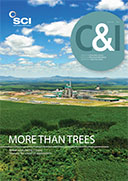Trends in most industries tend to be cyclical and the pharmaceutical contract manufacturing industry is no exception. Looking back at contract manufacturing organisations (CMOs) over the last forty years, a number of defined stages and trends have become apparent in their evolution.
The need to outsource began in the 1970s when pharmaceutical companies began to experience strains on capacity and looked to specialist companies to handle individual steps of chemistry that may have been hazardous or required specific technologies. The concept of outsourcing multiple steps and whole processes, especially in the latter stages of a chemical route towards the final API molecule under GMP conditions, was never imagined.
The blockbuster era brought in a new wave of thinking to pharma companies. Awash with the revenues that the successful drugs brought, R&D spend increased massively and capacity within manufacturing plants became stretched. FDA approvals of new drugs were steadily increasing, and with it came the rise of generic competition. The number of CMOs began to rise to meet the shortage of capacity and the bulging pipelines of drugs within pharma companies. Strategic outsourcing of multiple steps to CMOs created a feeding frenzy in the market as investors were predicting strong growth for service providers that could capitalise on the favourable industry dynamics.
The turn of the millennium brought about big changes to the industry. Not only was the blockbuster era subsiding and patent expirations adversely affecting sales revenues in big pharma, the approach to outsourcing was greatly altered with the widespread entry of Indian and Chinese companies. The CMO market was seen as a lucrative industry and an opportunity to turn their internal manufacturing assets to the global market.
These numerous factors, alongside mergers and acquisitions amongst big pharma resulted in a raft of cost cutting and CMOs soon became commodity manufacturers. Previously, where ingenuity and expertise were valued and strong customer-CMO relationships were forged, pharma companies opted for low prices ahead of high quality and trusted service, and price became the sole differentiator between suppliers. Predictably for western CMOs, this became a race to the bottom, and many struggled to compete against the lower labour costs and reduced margins of Asian companies.
Many CMOs went out of business, leading to reduced capacity across the US and Europe. Companies that survived these tough market conditions did so by adapting new business models and innovative ways of working with clients. The rewards for this flexibility and determination took time, though perseverance has paid off and over the last 5 years there has been a resurgence within the market. Approvals by the FDA for new drugs are once again rising, and the reported challenges to working with Asian suppliers have limited their appeal. Quality concerns and rising labour costs have made outsourcing to India and China less attractive than 20 years ago, as pharma companies seek to take back control of their supply chains. Business which was thought to be lost forever to Asian suppliers is being repatriated to the US and Europe.
Today, new entrants to the CMO market are no longer increasing but decreasing, and API volume demand is rising. It was, and remains so today, crucial to have the right assets available to meet market requirements. By mining market intelligence and researching key trends and upcoming market needs, CMOs were able to capitalise on these new opportunities and look once again to forge strong relationships with big pharma.
So forty years on, what is the next stage of the cycle? Are we going to reboot at some point, or is there another phase to go through?
The need for specialists and experts is as important now as ever – merely being a company with ‘capacity for hire’ is not an option. Investment into the industry is also on the rise, with CMOs being seen as valuable assets and there have been a number of acquisitions to build organisations with multiple capabilities. The trend towards becoming a ‘one stop shop’ is still in vogue despite numerous attempts in the past to leverage value from the concept. For CMOs, the concept of being able to forge alliances with clients for longer and offer multiple allied services is attractive, but for customers the driver will always be to seek out expertise for the appropriate stages of development.
The cornerstone of the industry is understanding client demand. Having the expertise and available capacity for customers is paramount for companies to succeed. For forward looking companies, innovation and offering new technologies will allow differentiation within the competitive CMO marketplace. It is impossible to predict where the industry may be in the next forty years, but even if the industry is indeed cyclical in nature, and the past ends up repeating itself, then there is even more need for CMOs to continue to listen to their customers, invest in capacity and technology where they need to and keep looking ahead.





